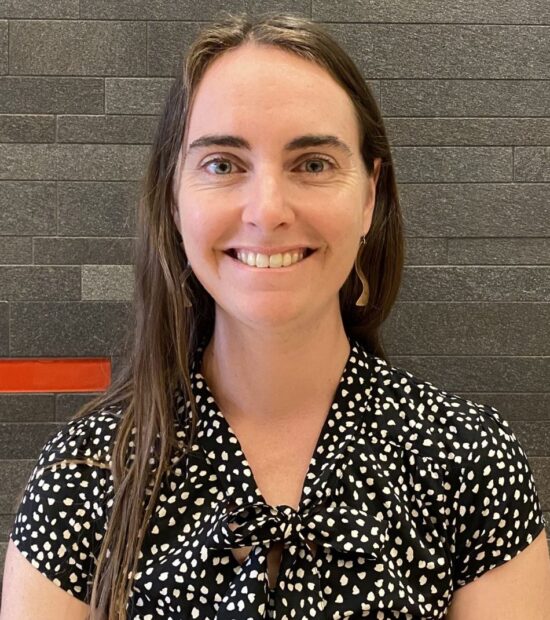In Idaho classrooms, certain desks sit empty day after day.
A number of issues could be keeping the students who belong in them from school, such as bullying, homelessness, anxiety, or a lack of transportation.
If those absences add up to 10% or more of the school year, they are defined as chronic and often translate to waylaid academic achievement, a growing body of research shows.
Worse yet, those students can easily slip out of the spotlight. The data might obscure their excessive absences; the teacher alone may not have time to investigate and solve that child’s issues; and preventive measures may not be in place to keep absences from becoming excessive.
National and local nonprofits are teaming up with schools to keep the spotlight on chronic absenteeism and change the way absences are perceived and remedied. At the statewide level, there’s a proposal to include chronic absenteeism data as a school quality indicator.
The efforts are coming as many children are readjusting to in-person school after a shift to remote and hybrid classes during COVID-19’s peak.
According to the State Department of Education’s most recent data from 2020-21, more than a quarter of the students in 19 school districts and charters were chronically absent. (It’s worth noting some schools or districts might have been offering remote or hybrid learning during this time period — the SDE didn’t track that information). The SDE plans to release 2021-22 chronic absenteeism data within three to 10 days; EdNews will cover the new numbers at that time.
| District/Charter | Percentage of students chronically absent in 2020-21 |
| Plummer-Worley | 56.7 |
| Lapwai | 42.8 |
| Wilder | 39.9 |
| Cottonwood | 39.8 |
| Pocatello/Chubbuck | 35 |
| Kootenai | 32.2 |
| Caldwell | 31.9 |
| Salmon River | 31.2 |
| Kamiah | 29.4 |
| Avery | <29 |
| Mullan | 28.6 |
| Salmon | 28.1 |
| Shoshone | 27.7 |
| Mountain View | 27.6 |
| Kellogg | 27.2 |
| Horseshoe Bend | 26.8 |
| Council | 26.4 |
| Payette | 25.9 |
| Inspire Academics, Inc. | 25.1 |
Last month, the Caldwell School District launched an attendance awareness campaign, among other initiatives geared at getting kids back in class.
United Way has collaborated with the SDE and Attendance Works, a national nonprofit, to support efforts like Caldwell’s and provide training on chronic absenteeism. The nonprofits are trying to “cultivate a change in mindset” when it comes to attendance.
Instead of blaming and punishing students and/or parents, the organizations advocate for understanding why absences are happening, resolving the root issues, and reinforcing good attendance behavior.
Accurate data and a positive mindset help get kids back in class
For years, attendance has been considered a matter of compliance. If students weren’t at school, districts blamed kids and families and would hold them accountable through the legal system.
“Eventually they were threatened with court, fines, taking away privileges, and sometimes even worse consequences,” said Hedy Chang, the founder and executive director of Attendance Works. “The challenge is that there are a lot of reasons kids can miss school that aren’t a matter of their own control.”
The child may not have positive role models at home, may not have access to health care, may not have appropriate clothing for the weather or may have unstable housing.
“The way you have to solve it is by understanding why kids miss in the first place,” Chang said. “This is a shift from that legalistic, punitive, blaming approach.” Plus, pointing fingers doesn’t “cultivate the kind of partnership and engagement that you need to have with students and families.”
“The way you have to solve it is by understanding why kids miss in the first place … This is a shift from that legalistic, punitive, blaming approach.” — Hedy Chang, the founder and executive director of Attendance Works
More states are adopting chronic absenteeism into their accountability measures (as Idaho is considering), which Chang called a positive. She encourages districts to mine the data for patterns, which might illuminate “a bigger challenge that requires a programmatic or policy intervention.”
For example, maybe there’s a huge spike in ninth grade absenteeism. That might indicate a difficult transition to high school that orientations could ease. Or data showing students from one neighborhood with excessive absences might lead to a discovery that there’s not a safe path from student homes to school or the bus stop. If kids are supplementing a three-day Thanksgiving break by taking two days off, maybe the district should consider a one-week break next year.
And when kids become chronically absent, they’re more likely to score lower on standardized tests, struggle to read on grade level, or even drop out, Chang said.
To get kids back in school, it takes the right mindset – one focused on positive problem-solving – and accurate data.
Average daily attendance has long been a central piece of data when it comes to tracking absences, but those numbers can obscure chronic absenteeism, Chang said. For example, a school might have 95% average daily attendance, but have 20% of its students chronically absent. That’s because those students are likely not all absent on the same day.
Chang is coming to Idaho in November for the Idaho Family and Community Engagement Conference, which focuses on attendance. She is the keynote speaker and will provide a workshop for schools.
Caldwell has adopted a district-wide approach to solving absenteeism
Every day matters.
That’s the message the Caldwell district has been spreading during the month of September, which is Attendance Awareness Month, via reader boards, posters, and videos.

The district has also focused on celebrating good – not perfect – attendance. How that looks varies from school to school. At elementaries, classes that have 96-98% attendance for the week might get to sport hats or even hard hats because they’re “coming to work every day.” And a middle school held an atten-dance dance for children who met the attendance threshold.
“We know punitive measures aren’t always the best solutions,” said Hortensia Hernandez, the district’s community school coordinator. “If we can really put an effort into prevention and celebration, we will have a better outcome.”
The district is also taking close looks at both average daily attendance and chronic absenteeism data, which has been essential for identifying the most at-risk students. And instead of looking at days missed, the district looks at a percentage threshold from the start of school to the current date. That way, students who are in danger of becoming chronically absent are identified early on.
Otherwise, only the “hot fire” students would come to mind – those who are failing all their classes, for example, or who have only been to one or two days of school. The data helps catch those who are maybe barely passing their classes and are starting to show a trend of frequent absenteeism.
“We want every kid to have every opportunity they can to thrive in and out of the classroom,” Hernandez said. “The best way to do that is to be in the classroom learning.”
When chronically absent kids are identified, teachers and other staff members call, send letters, and even do a home visit. If needed, a meeting is held between the parent, teacher, administrator, counselor and community school coordinator.
At the meetings, school leaders communicate with parents about how “every day’s learning builds upon the previous day … not just academically, but social skills, friendships and routines,” Hernandez said.
Most schools have a team that meets each week to look specifically at students who are developing patterns of excessive absenteeism.
“We know punitive measures aren’t always the best solutions … If we can really put an effort into prevention and celebration, we will have a better outcome.” — Hortensia Hernandez, Caldwell’s community school coordinator
“Kiddos and families are facing so many additional barriers,” Hernandez said. “If we can help them overcome those … that will make a huge impact in the generations to come and we’ll see the impacts in our community.”
United Way has been supporting efforts like those in Caldwell by helping bring chronic absenteeism training to educators, in partnership with Attendance Works and the SDE.
Hayley Regan, the collaboration manager for United Way of Treasure Valley, said it’s important to develop attendance teams in schools so the burden of resolving absences doesn’t fall on one person’s shoulders.

Then it’s “not just an administrator having to make those calls home; it’s a supportive team of folks that you can turn to when you identify a chronically absent student,” Regan said.
It’s also helped teachers feel less overwhelmed when a child is frequently absent. Educators feel more supported when there’s a team-based approach to getting kids back in school.
Regan said that if chronic absenteeism data is adopted into the ESSA plan (which the State Board of Education will vote on this month), it will help speed up the process of getting more districts and schools to focus on those students who are frequently gone.
“Things are changing and I think it’s really positive,” she said.
Idaho Education News data analyst Randy Schrader contributed to this report.
